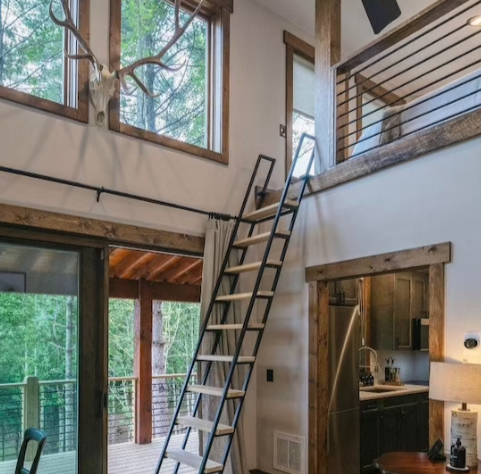Loft spaces can be charming additions to any home, offering extra room for storage or even a cozy nook. However, accessing these areas safely requires the right tools and precautions. wooden loft ladder, beloved for their classic aesthetic and sturdy build, are a popular choice. Here’s how you can ensure your ascent and descent are always safe and secure.
Understanding Wooden Loft Ladder Design
Not all wooden loft ladders are created equal. From foldable designs to sliding models, understanding the specific type of ladder you have is crucial. Foldable ladders often have hinges that require regular checks to ensure they’re secure, while sliding ladders need tracks free of obstructions. Regardless of the design, each ladder should have anti-slip rungs to prevent slips and falls. When purchasing, opt for ladders that meet safety standards, which ensures they’ve been tested for both durability and weight capacity.
Homeowners also need to consider the ladder’s placement. The ladder should always be positioned at a comfortable angle—usually between 60 to 75 degrees. This angle allows users to climb without straining, reducing the risk of falls. Remember, the right ladder design and placement can significantly enhance your overall safety experience.
Regular Maintenance for Longevity and Safety
A well-maintained wooden ladder not only lasts longer but also keeps you safe. Regular checks for wear and tear, such as cracks or splinters in the wood, can prevent accidents. Make it a point to inspect the ladder monthly, paying attention to both the rungs and the frame. Sand down any rough spots to reduce the risk of splinters and apply a wood sealant to protect against moisture.
Hinges and screws also play a vital role in ladder safety. Tighten any loose screws and apply lubricant to hinges to maintain smooth operation. This preventive maintenance ensures that your ladder remains stable and functional, reducing the likelihood of unexpected accidents.
Safe Practices for Climbing
Before climbing, always ensure your ladder is properly set up and locked in place. A wobbly ladder can be a recipe for disaster. Additionally, when climbing, face the ladder and maintain three points of contact at all times—two hands and one foot or two feet and one hand. This practice gives you stability and balance, minimizing the chance of slipping.
Avoid carrying heavy or cumbersome items while ascending or descending. If you need to move bulky items to the loft, consider using a pulley system or asking someone for assistance. Prioritize your safety over convenience, and remember that patience and caution are key when using wooden loft ladders.
Wrapping Up
Wooden loft ladders provide a stylish and practical way to access loft spaces, but safety should always be your primary focus. By understanding your ladder’s design, maintaining it regularly, and practicing safe climbing habits, you can enjoy the benefits of your loft without worry. Always prioritize safety, and if you’re unsure about any aspect of your ladder, consult a professional for advice. Happy climbing!

